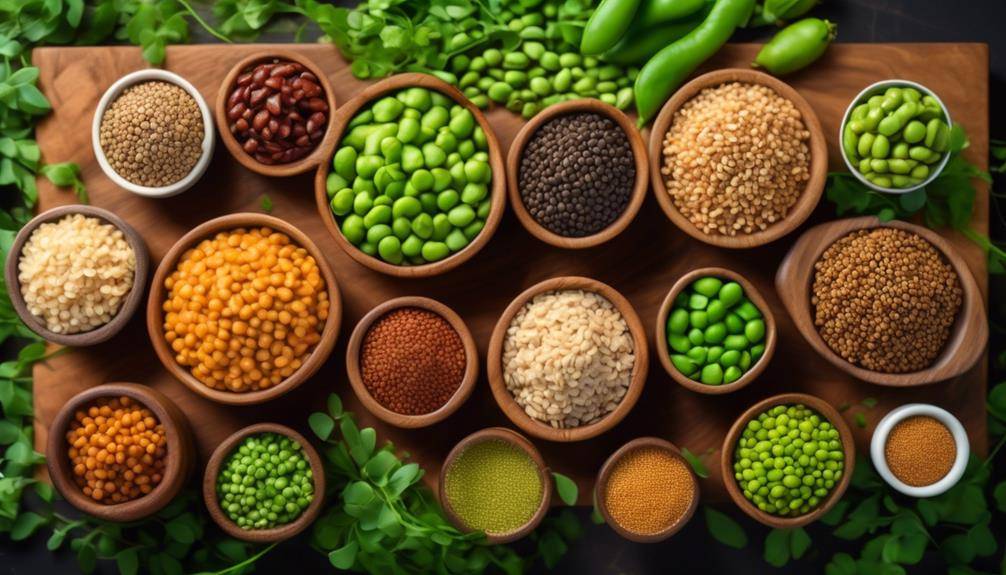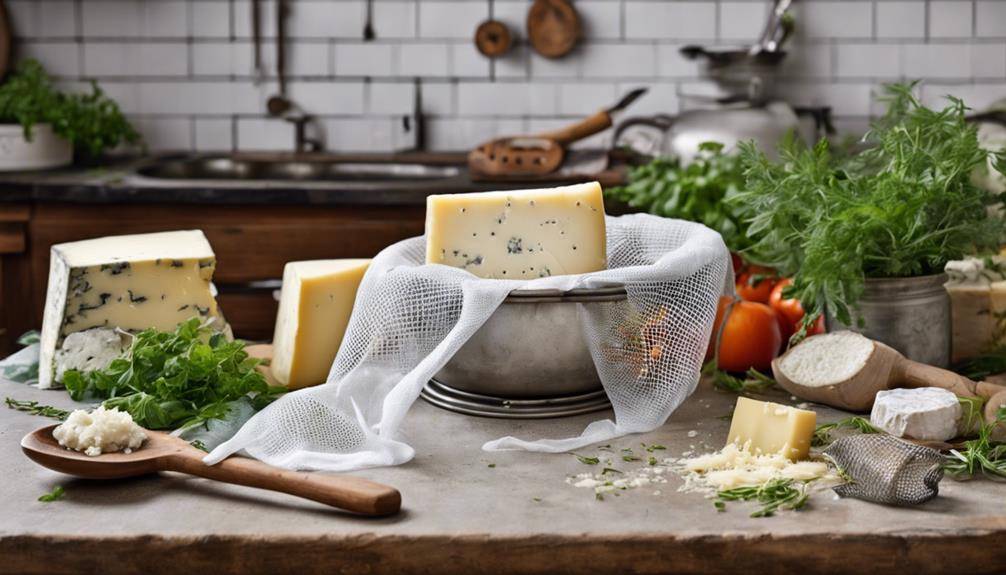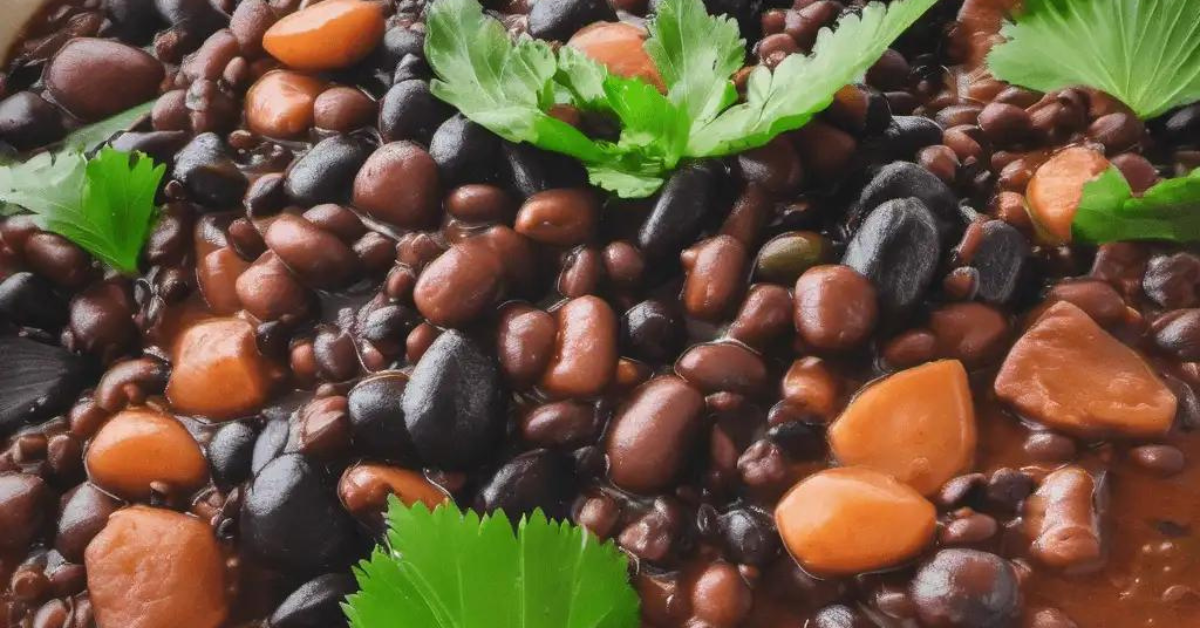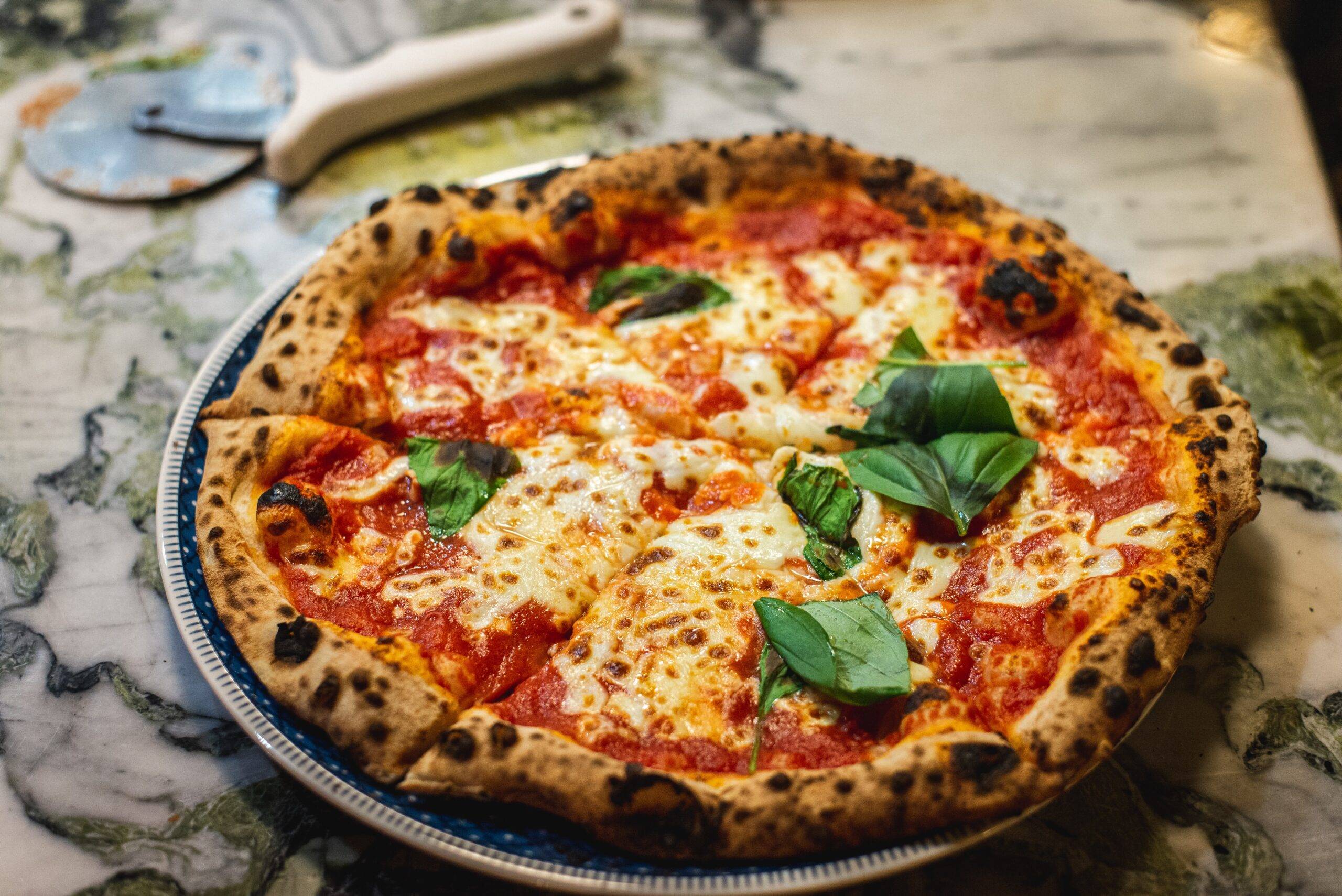The Amazing Evolution Of Traditional Cuban Cuisine
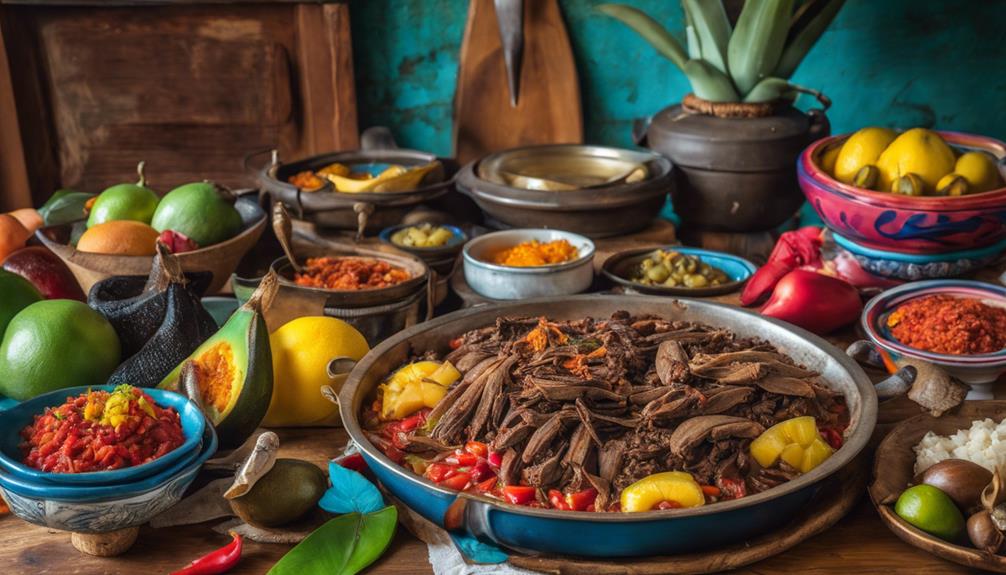
The Amazing Evolution Of Traditional Cuban Cuisine; Cuban cuisine is a vibrant mix of indigenous, Spanish, African, and Caribbean influences, shaped by history and culture. You’ll notice that Taíno ingredients like cassava and spices have melded with rice and beans introduced by the Spanish. African contributions enrich flavors with okra and unique cooking techniques. Today’s cuisine evolves further with modern interpretations, merging traditional dishes like ropa vieja with global influences. Culinary heritage remains essential, connecting families through shared meals and stories. If you’re curious about specific dishes and future trends in Cuban cooking, there’s so much more to discover.
Origins of Cuban Cuisine
Cuban cuisine often reflects the island’s rich history and diverse cultural influences. You’ll find that its culinary traditions are a tapestry woven from Spanish, African, and Caribbean roots. Each group has left a mark on the flavors and techniques used in Cuban cooking, creating a vibrant fusion that’s both unique and compelling.
As you explore regional variations, you’ll notice how different provinces incorporate local ingredients and customs. For instance, the use of tropical fruits and seafood near the coast diverges from the heartier dishes found in the central regions. This diversity not only showcases the island’s geography but also speaks to the cultural significance of food as a reflection of community identity.
Understanding the historical context is essential to appreciating Cuban cuisine. The island’s colonial past and the influence of enslaved Africans shaped the flavor profiles you enjoy today. Dishes like Ropa Vieja and Arroz con Pollo emerged from this blend, where spices and cooking methods intermingle to create something truly special.
Eating customs also play a pivotal role in how you experience Cuban food. Sharing meals is deeply ingrained in the culture, emphasizing connection and family. You’ll often find that dining is more than just nourishment; it’s a celebration of heritage. By embracing these elements, you can truly appreciate the origins of Cuban cuisine and its ongoing evolution, which continues to be a source of pride and identity for many.
Indigenous Taíno Influences
The Taíno people, the island’s original inhabitants, markedly influenced the culinary landscape of Cuba. Their contributions, rooted in Taíno agriculture, introduced essential crops like cassava, sweet potatoes, and maize, which still serve as cornerstones in Cuban cooking today. By utilizing native ingredients, the Taíno created a rich tapestry of flavors that became integral to Cuban cuisine.
Incorporating Taíno spices, such as the aromatic achiote and allspice, brought distinctive indigenous flavors to traditional dishes. You might find that these spices enhance the taste of contemporary meals, reflecting a blend of ancient practices and modern culinary traditions. The Taíno’s approach to cooking—steaming, boiling, and roasting—laid the groundwork for various cooking methods you see in Cuban kitchens now.
A cultural exchange occurred as the Taíno shared their knowledge of food preparation, which influenced not only local cuisine but also contributed to the broader Caribbean culinary heritage. You can trace the essence of Taíno dishes like “casabe,” a flatbread made from cassava, in many local recipes today, showcasing their lasting impact.
As you explore Cuban cuisine, you’ll appreciate how Taíno ancestral heritage remains alive through indigenous practices that prioritize community and shared meals. The flavors and techniques they introduced continue to resonate, reminding us of a rich history that shapes what you enjoy on your plate today.
Spanish Colonization Impact
With the arrival of Spanish colonizers in the 15th century, Cuba’s culinary landscape underwent significant transformation. The Spanish influence brought about a complex interplay of cultural exchanges that would shape the island’s cuisine for centuries. Colonial trade routes introduced new ingredients like rice, beans, and spices, which became staples in Cuban cooking. You’d notice how these ingredient adaptations created unique flavor introductions, blending Spanish and Taíno elements into a vibrant culinary tapestry.
As you explore traditional Cuban dishes, you might uncover the influence of culinary hierarchies established during colonization. The Spanish elite often dictated food symbolism, elevating certain ingredients while relegating others to the lower classes, reinforcing social stratification. This dynamic led to both regional variations and a shared culinary identity that reflects the island’s diverse history.
Additionally, dietary restrictions stemming from colonial influences played a role in shaping what was considered acceptable or desirable to eat. The fusion of Spanish techniques with local flavors resulted in dishes that not only satisfied hunger but also told historical narratives of resilience and adaptation.
In this ever-evolving landscape, you can appreciate how Spanish colonization left an indelible mark on Cuban cuisine, creating a rich mosaic that continues to influence culinary practices today. So, the next time you savor a Cuban meal, remember the layers of history and the fusion of cultures that brought those flavors to your plate.
African Culinary Contributions
When you explore Cuban cuisine, you’ll notice the profound influence of African culinary contributions. Ingredients like okra and black-eyed peas play a key role in many dishes, showcasing their impact on flavor and texture. Additionally, unique cooking techniques, such as slow-cooking and seasoning methods, have been adopted, enriching the culinary landscape of Cuba.
Key Ingredients Influence
Cuban cuisine thrives on a rich tapestry of flavors, largely shaped by African culinary contributions. Key spices like cumin, coriander, and garlic form the backbone of many dishes, enhancing their flavor profiles. You’ll find staple foods such as rice and beans, which are often combined with seasonal produce to create hearty meals that reflect local markets’ bounty.
Ingredient substitutions also play a crucial role; for instance, yuca and plantains are frequently used to accommodate dietary restrictions while maintaining authenticity. The use of these ingredients isn’t just about nutrition; it carries culinary symbolism, connecting dishes to cultural heritage.
Food preservation techniques, like fermenting and drying, are rooted in African methods, ensuring that ingredients remain available throughout the year. This reliance on local sourcing encourages a connection between community and cuisine, allowing for a vibrant exchange of flavors and traditions. As you explore Cuban cuisine, you’ll discover how these elements intertwine, revealing a dynamic landscape shaped by resilience and creativity. The influence of African culinary contributions is evident in every bite, making Cuban food a delicious celebration of history and culture.
Cooking Techniques Adaptation
Rooted in African culinary traditions, the cooking techniques in Cuban cuisine reflect a blend of practicality and creativity. You’ll notice how smoking techniques elevate the flavor of meats, infusing them with rich aromas that are hard to resist. The frying methods, often employed for plantains and fish, bring a satisfying crunch that complements the dish’s texture. Slow cooking, a hallmark of many African recipes, allows flavors to meld beautifully, creating hearty stews that warm the soul.
Steaming practices are also essential, especially for vegetables, preserving their nutrients and vibrant colors. Grilling styles bring a smoky element, often seen in the preparation of marinated meats. The marinating processes typically involve bold seasoning combinations, allowing the flavors to penetrate deep into the ingredients.
Baking variations showcase the influence of both African and Spanish techniques, resulting in delightful pastries and breads. Presentation styles play a pivotal role, as dishes are often artfully arranged to entice the eye. Ultimately, flavor balancing remains vital, ensuring each dish resonates with the perfect harmony of spices and ingredients. Embracing these techniques allows you to appreciate the rich tapestry of Cuban cuisine.
Caribbean Flavors and Techniques
Drawing from a rich tapestry of cultural influences, Caribbean flavors and techniques play an essential role in defining Cuban cuisine. You’ll find that the use of Caribbean spices like cumin, oregano, and allspice brings depth to dishes, enriching the flavor profiles that characterize this vibrant culinary heritage. These spices, combined with tropical ingredients such as mango, coconut, and plantain, create a unique palate that reflects Cuba’s diverse landscape.
Regional variations further highlight how local markets offer a bounty of seasonal produce, allowing you to experience the freshness of the islands. In Havana, for example, you might savor a rabo encendido, a flavorful oxtail stew that benefits from the addition of local herbs and spices, showcasing the island’s cooking traditions.
Cuban cuisine also embraces culinary storytelling, where each dish tells a tale of the land and its people. You’ll notice how traditional recipes are often passed down through generations, preserving not just flavors but also cultural identities. By sourcing ingredients from local markets, you’re not only supporting food sustainability but also connecting with the community and its cooking heritage.
Ultimately, the embrace of Caribbean flavors and techniques in Cuban cooking invites you to explore a world of sensory experiences. From the sizzling sound of a skillet to the aromatic scents wafting from your kitchen, you can appreciate how these elements come together to create a rich and delicious narrative on your plate.
The Role of Migration
When you explore Cuban cuisine, you’ll notice how migration has shaped its identity. Different cultures have brought unique culinary influences, resulting in exciting flavor fusions that define the food you enjoy today. As you taste these dishes, you can appreciate the adaptations that reflect the rich history of the Cuban people.
Culinary Influences From Abroad
Cuban cuisine is a vibrant tapestry woven from various culinary traditions, thanks in large part to the island’s rich history of migration. As people from different parts of the world settled in Cuba, they brought their unique culinary traditions, creating a cultural exchange that transformed the island’s food landscape. You can trace the influence of international spices and ingredients in many regional specialties, showcasing the diverse tastes that have emerged over time.
Historical recipes often blend local produce with global flavors, resulting in fusion dishes that tell a story of migration and adaptation. The Cuban diaspora also plays a significant role in shaping these culinary narratives, as immigrants introduce taste innovations and preserve traditional dishes while incorporating their new experiences.
This dynamic interplay has led to a wealth of culinary storytelling, where each meal reflects the island’s complex history. From hearty stews to vibrant rice dishes, you’ll find that every bite carries a piece of Cuba’s multifaceted identity. Embracing these influences enriches your understanding of Cuban cuisine and highlights the beauty of its ever-evolving nature.
Flavor Fusions and Adaptations
Blending flavors from various cultures, Cuban cuisine showcases how migration has shaped its culinary landscape. As you immerse yourself in the world of Cuban food, you’ll notice the rich tapestry woven from cultural exchanges, influenced by immigrants from Spain, Africa, and Asia. These interactions have led to ingredient adaptations, where traditional techniques marry with new elements, creating unique spice combinations that tantalize your taste buds.
In your culinary explorations, you’ll encounter remarkable flavor innovations that highlight the creativity of Cuban chefs. They skillfully blend regional variations, transforming classic dishes into modern interpretations that resonate with contemporary dining experiences. Whether it’s the introduction of Asian spices into a traditional ropa vieja or the fusion of Caribbean fruits in a savory dish, you’re bound to discover something fresh and exciting.
Through this journey, you engage in taste explorations that reflect the evolving nature of Cuban cuisine. Each bite tells a story of migration, resilience, and culinary creativity, reminding you that food is not just sustenance—it’s a celebration of culture and history. So, embrace these flavor fusions, and enjoy the delicious legacy of Cuba’s diverse heritage.
Traditional Ingredients in Use
Cuba’s culinary landscape thrives on its vibrant traditional ingredients that reflect the island’s rich history and diverse cultures. When you explore traditional cooking, you’ll find that local markets are treasure troves of seasonal produce, from ripe plantains to fresh vegetables that are fundamental in many dishes. These ingredients not only form the backbone of family recipes but also showcase the clever ingredient substitutions that home cooks have employed over the years, adapting to availability and preference.
Understanding the spice profiles unique to Cuban cuisine is essential. You’ll notice how cumin, garlic, and oregano play significant roles in enhancing flavors, while also being central in culinary rituals that bring families together. The art of food preservation, whether through pickling or drying, reflects the ingenuity of Cuban cooks, ensuring that nothing goes to waste.
Flavor pairings are another exciting aspect of Cuban cooking; you’ll often find that beans and rice come together to create a complete meal, showcasing the harmony of taste and nutrition. Sourcing practices also come into play, as many families prioritize buying from local vendors to keep the tradition alive while supporting their community. By embracing these traditional ingredients, you connect to a culinary heritage that’s as rich and diverse as the island itself. As you explore Cuban cuisine, remember that each ingredient tells a story, deepening your appreciation for this vibrant culture.
Cooking Methods Through Time
The evolution of cooking methods in Cuba reveals a fascinating journey influenced by various cultures and historical events. You might notice that traditional Cuban cuisine relies heavily on slow cooking techniques, allowing flavors to meld beautifully over time. This method not only preserves the authenticity of the dishes but also reflects the island’s history of resourcefulness.
Grilling techniques have become a staple, showcasing the vibrant flavors of marinated meats and vegetables. Whether you’re using a charcoal grill or an open flame, the smokiness adds a unique depth to your meals. Steaming methods also play an essential role, especially when preparing seafood, as it retains moisture and enhances natural flavors.
Braising styles, combining moisture and heat, allow tougher cuts of meat to become tender and succulent. You can’t forget roasting traditions, often highlighted during festive occasions, where meats are seasoned and cooked to perfection, creating a crispy exterior and juicy interior.
Frying practices add a delightful crunch to many dishes, while poaching variations are less common but can be ideal for delicate proteins. Baking methods are crucial for creating traditional Cuban bread and pastries, offering you a taste of the island’s sweet delights.
Sautéing tips can elevate your vegetable dishes, making them vibrant and full of flavor. Ultimately, sous vide applications, though modern, are slowly finding their way into Cuban kitchens, promising precision in cooking that enhances the traditional experience. Embracing these methods allows you to appreciate the rich culinary heritage of Cuba.
Influence of Globalization
Globalization has transformed Cuban cuisine in exciting ways, blending traditional flavors with influences from around the world. As you explore this culinary landscape, you’ll notice how migration has introduced new ingredients and techniques, creating unique fusions. Plus, the availability of modern ingredients has opened up endless possibilities for Cuban chefs and home cooks alike.
Culinary Fusion Dynamics
Culinary fusion in Cuban cuisine showcases how diverse influences can meld into a vibrant food culture. As globalization spreads, you’ll notice an exciting wave of culinary creativity that invites flavor experimentation. This cultural exchange allows you to experience dishes that reflect a blend of traditional Cuban flavors with global ingredients.
You might find chefs using fusion techniques to adapt classic recipes, creating new taste evolution that surprises and delights. Imagine a traditional ropa vieja paired with Asian spices, or a classic flan infused with tropical fruits. These innovations stem from a desire for gastronomic collaboration, bringing together various culinary traditions while celebrating their uniqueness.
Ingredient adaptation plays a pivotal role in this fusion landscape. You can see local produce being combined with international staples, enriching the dining experience. This dynamic not only excites your palate but also supports heritage preservation by ensuring traditional flavors remain relevant.
Ultimately, culinary fusion in Cuba illustrates how food transcends borders, cultivating connections and fostering a global community. As you explore this evolving cuisine, you’re participating in a delicious dialogue that honors history while embracing the future.
Impact of Migration
Migration has greatly shaped the landscape of Cuban cuisine, introducing new ingredients and cooking techniques that reflect the diverse backgrounds of those who’ve settled on the island. The Cuban diaspora has brought a wealth of immigrant flavors, enriching the culinary heritage you enjoy today. As newcomers adapted traditional recipes to include regional variations, they added depth to the island’s food identity.
Through cultural exchange, you see how different communities connect over meals, blending their unique tastes and traditions. Each dish tells a story, showcasing gastronomic storytelling where flavors narrate the journey of the people. Culinary innovation flourishes as chefs experiment with these influences, creating exciting fusions that honor both the past and the present.
The impact of migration goes beyond mere taste; it fosters community connections, uniting people from various backgrounds around a shared love for food. As you savor a plate of ropa vieja or tostones, remember that these dishes embody the rich tapestry of experiences that shape Cuban cuisine. By embracing this evolution, you keep the spirit of traditional recipes alive while welcoming new interpretations that reflect the island’s dynamic, multicultural landscape.
Modern Ingredient Availability
Today, an impressive array of ingredients is readily available to chefs and home cooks in Cuba, thanks to the influence of globalization. This access has transformed ingredient sourcing, allowing you to explore seasonal produce that enhances your dishes while supporting local markets. You’ll find that health trends have sparked a focus on fresh, organic ingredients, encouraging culinary innovation in traditional recipes.
With the rise of food accessibility, you can experiment with flavors from around the world, blending them with regional specialties to create unique culinary fusions. Sustainable practices have also become a priority, promoting community cooking that emphasizes local ingredients and environmentally friendly methods.
As you immerse yourself in flavor experimentation, you’ll discover new ways to reinterpret Cuban classics, making them healthier and more exciting. Whether you’re a professional chef or a passionate home cook, the evolving landscape of modern ingredient availability invites you to embrace creativity in the kitchen. You’re not just preparing meals; you’re participating in a cultural dialogue that honors tradition while celebrating innovation. This dynamic culinary scene reflects Cuba’s rich heritage and the exciting possibilities globalization offers.
Modern Cuban Fusion Cuisine
Modern Cuban fusion cuisine brings together the rich traditions of Cuban cooking with flavors and techniques from around the world. You’ll find chefs creatively blending Cuban street food staples with global influences, resulting in unique dishes that tell a story. This culinary innovation embraces flavor experimentation, inviting you to experience familiar tastes in unexpected ways.
In urban food culture, you notice the rise of food trucks and pop-up restaurants that showcase these innovative creations. Chefs collaborate across culinary backgrounds, bringing their expertise to the table and enhancing the dining experience. They prioritize ingredient sustainability, sourcing fresh, local produce and responsibly raised proteins, which not only supports the community but also elevates the flavors of their dishes.
You’ll see classics like ropa vieja transformed into tacos topped with kimchi or a traditional picadillo reimagined as a gourmet burger with a twist. Each dish reflects a narrative of cultural exchange, celebrating the essence of Cuban heritage while embracing modern techniques. Culinary storytelling becomes an essential part of the dining experience, as chefs share the histories and inspirations behind their creations.
As you explore this vibrant scene, you’ll discover that modern Cuban fusion cuisine is more than just a meal; it’s a journey of taste that connects you to a broader world. Whether you’re enjoying a plate of yuca fries with an Asian-inspired dipping sauce or sampling a tropical ceviche with a hint of Mediterranean flair, you’re part of a culinary evolution that honors tradition while looking toward the future.
Preserving Culinary Heritage
Amid the excitement of Cuban fusion cuisine, the importance of preserving culinary heritage remains a priority. You might find joy in exploring the rich tapestry of culinary traditions that form the backbone of Cuban culture. By delving into historical recipes passed down through generations, you can uncover the stories that define your identity and connect you to your roots.
Participating in food storytelling during family gatherings is a wonderful way to keep these traditions alive. Sharing meals made with seasonal ingredients from local markets not only supports community farmers but also emphasizes the importance of fresh, local flavors in your cooking. You can also engage in cooking classes that focus on traditional techniques, offering hands-on experiences that deepen your appreciation for the art of Cuban cuisine.
Heritage festivals provide a vibrant platform for culinary preservation. These events celebrate the diverse influences that shape Cuban gastronomy, and you’ll likely discover unique dishes that might have faded into obscurity. Community kitchens serve as hubs for sharing knowledge and skills, fostering a sense of belonging while ensuring that the culinary heritage is passed on to the next generation.
Popular Cuban Dishes Today
Cuban cuisine boasts an array of popular dishes that reflect its rich cultural influences and vibrant flavors. You can’t talk about Cuban food without mentioning Ropa Vieja, a savory shredded beef dish simmered in a tomato-based sauce, often served with rice and black beans. It’s a staple that highlights traditional recipes passed down through generations.
Another beloved dish is Arroz con Pollo, a comforting combination of chicken and rice seasoned with saffron and spices. This dish is a perfect example of how Cuban cooking marries simplicity with depth of flavor. If you’re looking for something quick and casual, you might want to try Cuban street food like Tostones—crispy fried green plantains that pair perfectly with a garlicky dipping sauce.
Don’t overlook the classic Lechón Asado, a marinated roast pork that’s often the centerpiece of family gatherings. The rich, smoky flavor makes it irresistible. And of course, you can’t forget about the iconic Cuban sandwich, layered with ham, roast pork, Swiss cheese, pickles, and mustard, all pressed to perfection.
Cuban cuisine isn’t just about traditional recipes; it’s also about the experience. Whether you’re savoring a meal at a bustling food stall or enjoying a home-cooked dinner, the flavors and aromas will transport you to the heart of Cuba. Each dish tells a story, celebrating the island’s culinary heritage and the diverse influences that shaped it.
Future Trends in Cuban Cooking
As the culinary landscape evolves, Cuban cooking is poised to embrace innovative trends that blend tradition with modern influences. You’ll see an increasing focus on sustainable ingredients, as chefs recognize the importance of sourcing locally while supporting the environment. By adopting these practices, they’re ensuring that the rich flavors of Cuba remain vibrant for future generations.
Plant-based innovations are also making their way into the kitchen, with more chefs experimenting with vegan versions of classic dishes. This trend not only caters to a growing demand for healthier options but also highlights the versatility of Cuban cuisine. Culinary technology will play a significant role in this transformation, allowing for exciting new methods of preparation and presentation that enhance traditional flavors.
Regional variations of Cuban cuisine are gaining attention, as chefs explore local ingredients and unique cooking techniques. This exploration invites food tourism, encouraging visitors to experience the diverse culinary landscape across different provinces. Chef collaborations are becoming more common, fostering creativity and the sharing of ideas that further enrich Cuban cooking.
Frequently Asked Questions: Evolution Of Traditional Cuban Cuisine
What Are the Most Common Misconceptions About Cuban Cuisine?
You might think Cuban food only features rice and beans, but that’s a myth. Authenticity debates often overlook regional influences, diverse ingredients, and the rich culinary history that shapes modern Cuban cuisine.
How Do Climate and Geography Affect Cuban Cooking Styles?
Climate and geography shape Cuban cooking styles by providing abundant tropical ingredients. You’ll notice regional variations in dishes, with coastal areas favoring seafood, while inland regions emphasize meats and hearty vegetables, reflecting their unique environments.
Are There Any Famous Cuban Chefs Influencing Global Cuisine?
Yes, there are famous Cuban chefs like José Andrés who influence global cuisine. Their Cuban culinary influences and chef fusion techniques blend traditional flavors with modern approaches, creating unique dishes that resonate worldwide. You’ll love exploring these innovations!
What Role Does Music Play in Cuban Dining Experiences?
In Cuban dining, music’s essential. You’ll feel the Cuban rhythms enhancing the dining ambiance, connecting you to rich musical traditions. This vibrant experience reflects Cuba’s cultural heritage, making every meal a celebration of life and flavor.
How Has Cuban Cuisine Adapted to Dietary Restrictions and Trends?
Cuban cuisine’s adapted to dietary restrictions by embracing plant-based adaptations and offering gluten-free options. You can enjoy vibrant dishes that cater to your needs while still celebrating the rich flavors and culinary traditions of Cuba.
Conclusion
Cuban cuisine is a vibrant tapestry woven from its rich history and diverse influences. By embracing its indigenous roots, Spanish flavors, and African traditions, you can appreciate the evolution of this culinary art. Today, as modern fusion techniques emerge, it’s important to preserve the essence of traditional dishes. Whether you’re savoring a classic Ropa Vieja or exploring new flavors, you’re part of a delicious journey that honors the past while looking to the future of Cuban cooking.



